Whether you’re interested in moving to South Bend or learning more about the city’s livability, the pros and cons of living in this Northern Indiana town are essential.
As a college town, South Bend is home to the University of Notre Dame, which has helped the region to thrive but still offers a laid-back lifestyle.
With an average commute of only 21 minutes, residents can access excellent parks, extensive recreational opportunities, a comprehensive zoo, delicious dining options, a vibrant culture and arts scene, plus college sports.
Keep reading to learn more about the pros and cons of living in South Bend!
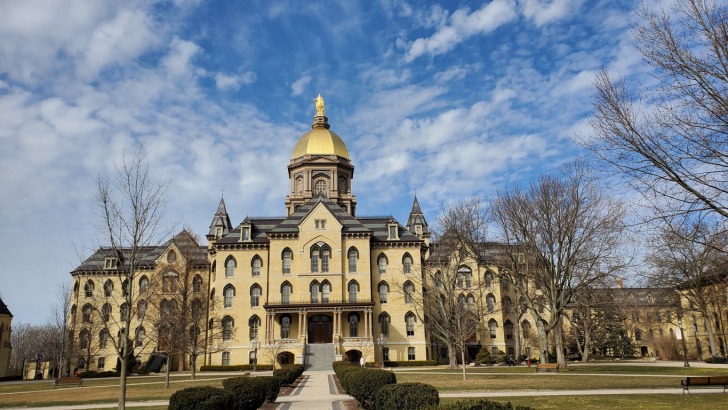
Contents
Pros of Living in South Bend, IN
1. Affordable Cost of Living
Moving to South Bend gives residents a sigh of relief relating to healthcare, transportation, utilities, housing, and food.
The 2022 cost of living was 86.3, with the national average being 100.
Nearby Chicago has a cost of living index of 118.2.
Also, the South Bend medium home value is $165,000 and $198,000 in St. Joseph County versus a national median cost of $356,000.
For those looking to rent, the median price is $800 monthly for a one-bedroom versus $1,096 for the national average.
2. Central Location
South Bend offers various attractions, and the region opens the door to many entertainment opportunities.
Mishawaka has extensive dining and retail options with an exceptional outdoor recreation scene.
Drive further into Shipshewana and Middlebury, two small towns with a burgeoning Amish community boasting Amish-owned cafes and stores and outdoor activities.
Additionally, a short drive brings you to the Lake Michigan shores and the bustling city of Chicago.
3. Diverse and Neighborly Community
The community in South Bend is incredibly friendly and welcoming to visitors and their fellow neighbors.
Walking down the street or into a local business, you will be warmly greeted.
Also, South Bend is incredibly diverse, with deep ties and roots to the area.
The student population also contributes to the infusion of different demographics, resulting in vibrant and ethnic communities.
4. Education Destination
South Bend is home to a private female liberal arts (Saint Mary’s College), a private co-ed Catholic college (Holy Cross College), Ivy Tech Community College, offering certificates and associated degrees, Indiana University at South Bend, and the jewel of the area, the University of Notre Dame.
South Bend is not subjected to the brain drain that many other small cities experience, as graduates from these institutions remain in the city and add to the skilled labor force.
In addition to the excellent educational opportunities, Notre Dame is a leading global research center in various fields.
It has multiple entertainment and arts opportunities like concerts, galleries, and sporting events.
5. Four Seasons
Given its midwestern location, South Bend boasts four seasons – comfortable springs, hot summers, chilly winters, and crisp autumns.
Unlike many other U.S. cities with consistently mild or warm temperatures, South Bend enjoys the distinction of each season.
Fall means beautiful foliage and Notre Dame football.
Spring equates to gardening, new sporting events, and outdoor markets.
Summertime is excellent for cookouts, outdoor concerts, and watersports.
Winter is great for cozy fires, ice skating, and cross-country skiing.
6. Superb Outdoor Recreation
Access to extensive outdoor recreation activities like biking and hiking further supports South Bend’s upswing.
Parks like Rum Village Aerial Park, Potato Creek State Park, and Indiana-Michigan River Valley Trail offer extensive paths.
Visiting these many parks allows visitors to view the gorgeous regional birds.
Potato Creek is a haven for birds ranging from ospreys to bald eagles.
Howard Park offers ice skating on the 16,000-square-foot pond, while St. Patrick’s County Park is a popular tubing hill with trails for cross-country skiers.
7. Tech Job Growth
Due to the talent graduating from the many schools in the area, South Bend continues to be an attractive tech hub, drawing new companies.
For instance, Analytics is a data platform company delivering solutions and insights that have set up shop in South Bend.
One of the greatest benefits of relocating to South Bend is the tech job growth, much due to the dark fiber installed in the early 2000s.
This has helped connect education, government, and local business, resulting in excellent job growth.
8. Thriving Arts Scene
South Bend boasts a thriving arts scene with new murals to be painted around the city, thus offering beautiful color and flair.
The region also boasts the South Bend Symphony Orchestra, thus engaging the community with classical and orchestral music.
The Morris Performing Arts Center surpassed 100 years old and has countless yearly performances.
The Center is home to the South Bend Symphony, a nationally recognized dance, music, and Broadway performance group.
Cons of Living in South Bend, IN
Like with living in any city, South Bend has various negative aspects that must be considered before moving, including the following:
1. Frigid Winters
For those who do not like having four seasons or dislike winter, South Bend is not the best place to live.
The winters are dry but incredibly blustery and snowy, with regular precipitation coming from Lake Michigan.
Since South Bend is located on flat plains, no hills or mountains keep the city warm during the winter, so it gets hit with the same weather as neighboring Chicago.
2. Game Days Are Hectic
College football is king in South Bend, so Saturday afternoons and evenings see an influx of traffic, restaurant and bar lines, noise, and organized chaos.
For those moving from a smaller city that isn’t used to this population explosion, this can be an adjustment, especially if you’re trying to go grocery shopping or run errands.
While this type of activity is common in larger cities due to different activities, Notre Dame fans flock to the city to root for their favorite team, tailgate and have a good time.
3. High Drug Use
While the several universities in the area are not known for having a drug problem, the town has issues with heroin and fentanyl usage, like many other places in the U.S.
The availability of drugs from Chicago is high, so it’s accessible to students and locals alike.
While crime continues to be low, the increase in drug use could eventually result in increased theft and drug-related violence.
4. Lacks Big City Amenities
Although college football is king in South Bend, there are some cultural activities like the orchestra; South Bend needs other big city amenities like professional sports teams and high-end restaurants.
Although the city enjoys its small-town feel, South Bend will be a significant adjustment for those moving from origins with extensive amenities.
Luckily, Chicago is only a 90-mile drive from the city, so options exist for fulfilling those needs.
5. Limited Public Transportation
Although South Bend has easy access to Chicago via Northern Indiana Commuter Transportation District rail on the South Shore Line, the times are infrequent.
Only buses are available within the region to get around the city and to neighboring towns, but they are also limited.
Therefore, if you’re moving from a city with excellent mass transit coverage, you will be disappointed in South Bend.
This means that residents need a car to avoid the hassle of mass transit.
6. No High-End Shopping
If you want to move to a place with high-end stores featuring luxury goods, you won’t find them in South Bend.
The city has stores that meet the needs of college students, which don’t include luxury items.
With Chicago and Indianapolis two hours away, there are plenty of alternatives for high-end shopping, just not in the town.
7. Not Walkable
Although South Bend has a compact downtown area, the rest of the city is spread out and not walkable.
Since the mass transit options are below average, it’s difficult or costly for students and visitors without a car to efficiently get around town.
This means you need a vehicle in South Bend unless you live centrally located.
8. Subpar Restaurants
With a few exceptions, South Bend doesn’t have amazing restaurants, and the nightlife only consists of college bars.
While this is a college town, the options will disappoint those looking to relocate from larger cities or areas with more vibrancy.
There are plenty of bars and restaurants to visit, but there’s a lack of diversity in the various establishments.
Also, few ethnic restaurants exist as it’s mostly American pub food at different places.
The Notre Dame campus only has more variety for students, so the locals cannot access these food spots.
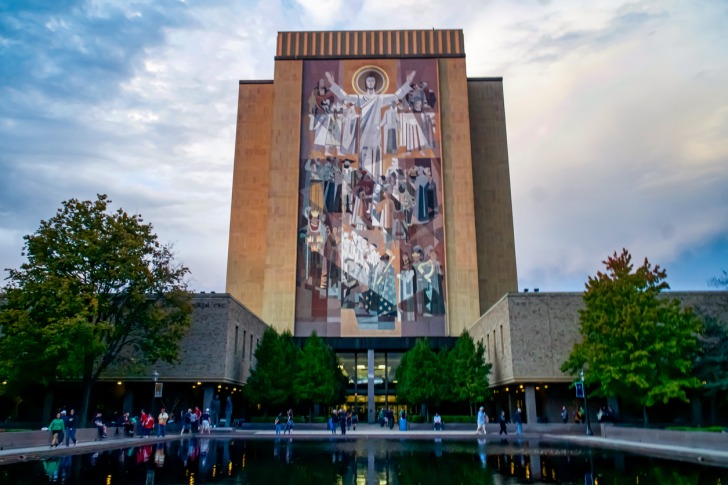
Pros and Cons of Living in South Bend, IN – Summary Table
| Pros of Living in South Bend, IN | Cons of Living in South Bend, IN |
|---|---|
| 1. Affordable Cost of Living | 1. Frigid Winters |
| 2. Central Location | 2. Game Days Are Hectic |
| 3. Diverse and Neighborly Community | 3. High Drug Use |
| 4. Education Destination | 4. Lacks Big City Amenities |
| 5. Four Seasons | 5. Limited Public Transportation |
| 6. Superb Outdoor Recreation | 6. No High-End Shopping |
| 7. Tech Job Growth | 7. Not Walkable |
| 8. Thriving Arts Scene | 8. Subpar Restaurants |
South Bend Safety Overview
READ THE FULL REPORT: South Bend Safety Review
Safety Index:
- OVERALL RISK: MEDIUM
- TRANSPORT & TAXIS RISK: MEDIUM
- PICKPOCKETS RISK: MEDIUM
- NATURAL DISASTERS RISK: MEDIUM
- MUGGING RISK: MEDIUM
- TERRORISM RISK: LOW
- SCAMS RISK: MEDIUM
- WOMEN TRAVELERS RISK: MEDIUM
Frequently Asked Questions
Is South Bend a good place for retirees?
Yes, South Bend is an affordable place to live with a rich history, a growing arts scene, and various small-town amenities.
Also, the cost of living is low, perfect for those on a fixed income.
Outside of game day weekends, the area is relatively quiet, with manageable traffic.
South Bend is regularly rated as a top place to retire in Indiana.
Is South Bend safe at night?
Most crime at midnight occurs on the south side of town and west of downtown South Bend.
Notre Dame and Holy Cross campuses are well-lit and safe to walk around at night.
Like any city, avoid dimly lit areas and stay on main roads.
Most are property crimes caused by teenagers, but it’s always better to be safe than sorry.
What are winters like in South Bend?
Winter temperatures reach the lowest in January with an average of 23 degrees, ranging from daytime highs of 30 to lows of 16.
The wind chill can be brutal since the area is flat, causing the temperatures to dip into the single digits.
Does South Bend have a flooding problem?
Southeast South Bend has a moderate flooding risk in the next 30 years, which could impact daily life within this city section.
Home insurance premiums will increase for those looking to buy a home in this area due to the flooding risk, so assessing all factors is important.
Other areas away from the Saint Joseph River have a low flooding risk.
Do seniors pay income tax in South Bend?
The State of Indiana does not tax Social Security benefits, and all military income will also be exempt from state income tax beginning in 2024, including Railroad Retirement benefits and military pensions.
Other retirement income is taxed at 3.15 percent.
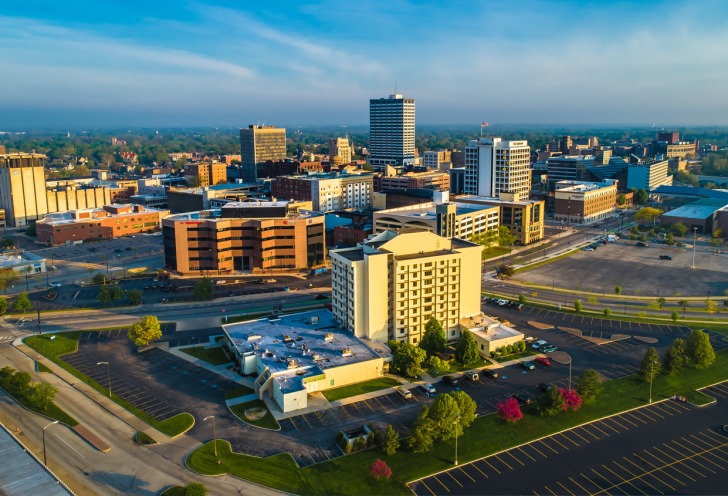
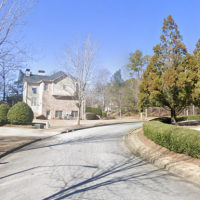
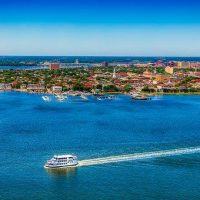

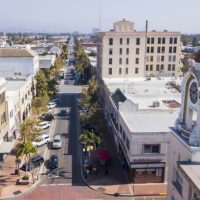
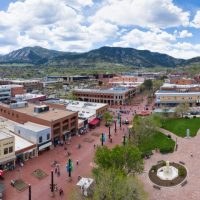
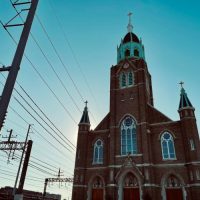





Although there are job opportunities, particularly in education and healthcare, the job market can be competitive, and wages in some sectors may be lower compared to larger metropolitan areas.
Public transportation options are limited, which can be inconvenient for those without a car.